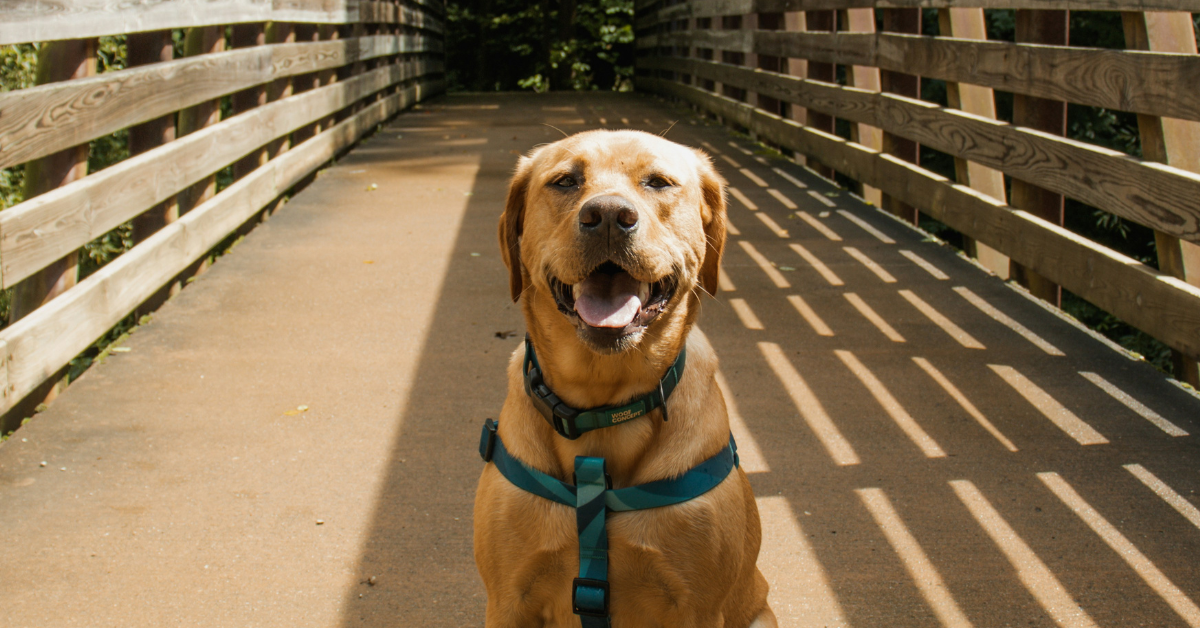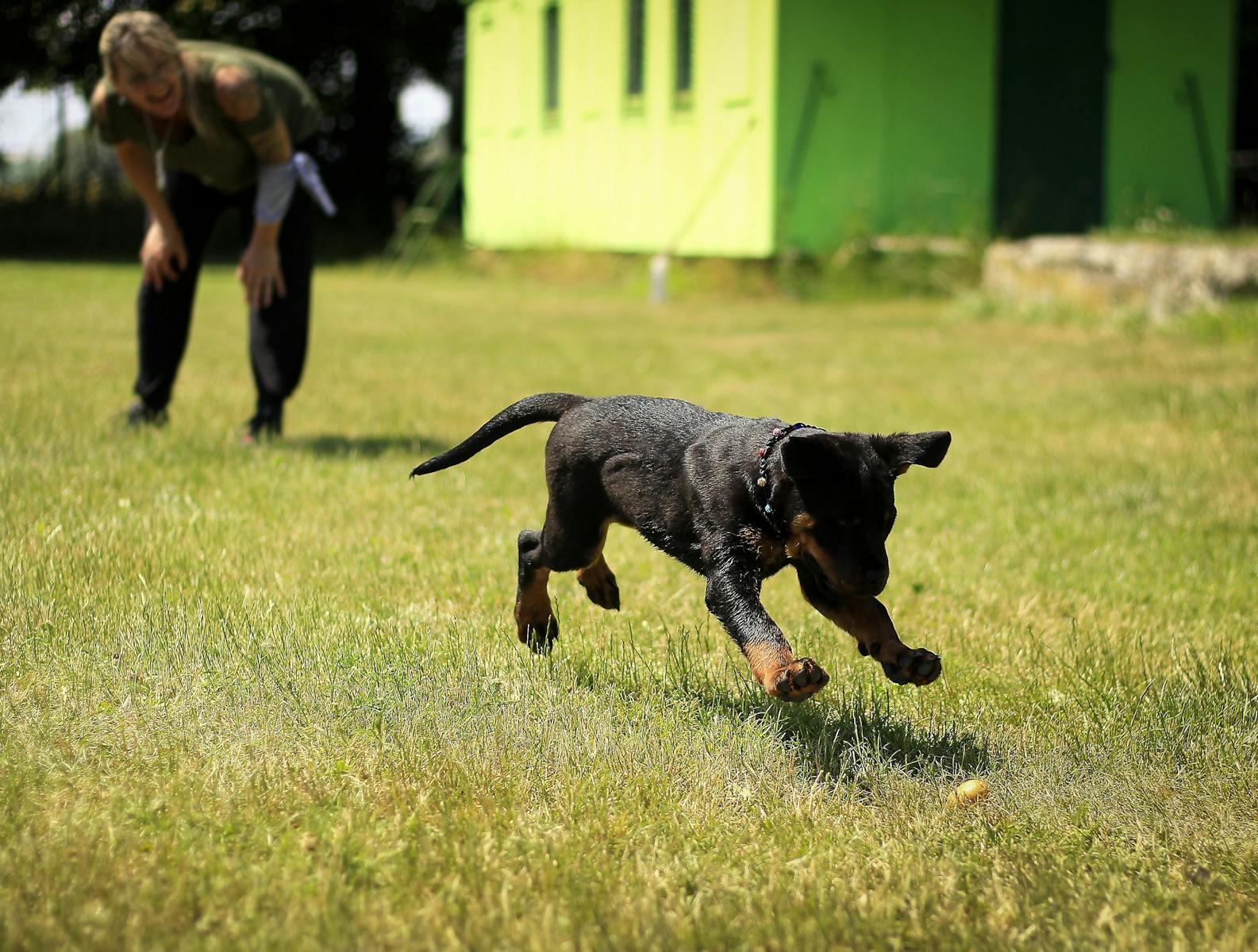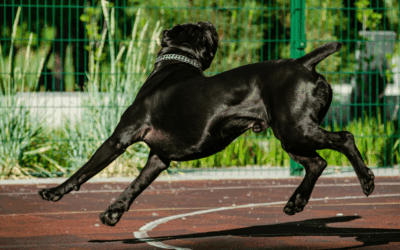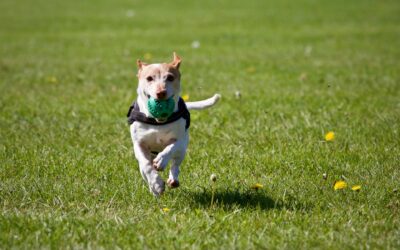After years of working hands-on with dogs across Northern Virginia, I’ve learned something fundamental: confidence isn’t taught through chaos. It’s built through a calm, consistent structure.
At Canine Cardio, we don’t believe in shortcuts or quick fixes when training dogs. We believe in leadership—the kind that helps dogs feel safe, understood, and capable. Our approach combines fitness, enrichment, and behavioral balance to create dogs who don’t just obey basic commands but truly thrive in their everyday lives.
This isn’t about control. It’s about communication. It’s about helping your dog understand what’s expected so they can relax, respond willingly, and move through the world with calm confidence.
Whether you’re working with a new puppy, an anxious rescue, or an older dog with ingrained habits, the dog training tips in this guide are rooted in real-world experience—not theory. These are the same principles our Pack Leaders use every day in our Structured Daycare, Canine Cardio Gym, and Train for Reality™ Academy.
Let’s dive in.
Understanding Calm Confidence: The Foundation of Every Training Session
Calm confidence isn’t a personality trait your dog is born with. It’s a state of mind you help them build through structure, consistency, and leadership.
A dog who feels safe and led doesn’t react out of fear or frustration. They respond out of trust. That’s the difference between a dog who lunges at other dogs on a walk and one who stays calm and focused by your side. It’s not about obedience for obedience’s sake—it’s about creating emotional balance.
Movement plays a critical role in this process. Whether it’s treadmill sessions, agility work, or purposeful walks, physical activity supports mental structure. A dog who’s been exercised with intention is more capable of self-regulation. They can think before reacting.
I once worked with a German Shepherd named Max who came to us anxious and reactive. His owner had tried everything—treats, commands, even medication—but nothing stuck. What Max needed wasn’t more commands. He needed leadership. Through structured gym sessions, calm energy from our Pack Leaders, and consistent expectations, Max transformed. He learned to trust the structure around him, and that trust translated into calm confidence in every environment.
At Canine Cardio, we teach dogs how to think, not just follow commands. That’s the foundation of everything we do.
The 3-3-3 Rule for Dogs: Adjusting Expectations for New Environments
Change is hard for dogs. Whether you’re bringing home a new rescue, moving to a new house, or enrolling your dog in daycare for the first time, understanding the 3-3-3 rule will help you set realistic expectations on how your dogs respond.
3 Days: Your dog is decompressing. They’re overwhelmed, uncertain, and likely on edge. Don’t expect them to settle in or show their true personality yet. Give them space, structure, and calm energy.
3 Weeks: Your dog starts to relax. They’re learning the routines, understanding the boundaries, and beginning to trust their new environment. This is when you’ll see small breakthroughs.
3 Months: Your dog fully adapts. They’re comfortable, confident, and their true personality shines through. This is when training really takes hold.
The 3-3-3 rule reminds us that progress takes time. Keep training sessions short. Training your dog isn’t a race. It’s a relationship built through patience, structure, and consistency. If you rush the process, you’ll create confusion instead of confidence.
Lead calmly. Trust the timeline. Let your dog settle into the structure you provide.
The 5 D’s of Dog Training: Building Focus and Consistency
Training isn’t just about teaching a dog to sit or stay. It’s about helping them generalize those skills across different conditions. That’s where the 5 D’s come in.
Distance: Can your dog follow a command when you’re standing across the room? Across the yard?
Duration: Can they hold a sit-stay for five seconds? Thirty seconds? Five minutes?
Distraction: Can they focus when another dog walks by? When someone rings the doorbell?
Difficulty: Can they perform the behavior on different surfaces, in different positions, or with added complexity?
Diversity (Environments): Can they do it at home, at the park, at a café, or in a new place they’ve never been?
Each D represents a layer of reliability. At Canine Cardio, we build skills through controlled progression. We don’t throw dogs into chaos and hope they figure it out. We gradually increase each D so they learn to succeed under pressure.
For example, teaching “sit” might start in a quiet room with no distractions. Once your dog masters that, you add distance. Then duration. Then distraction—maybe a toy on the ground or another dog nearby. Over time, they learn that “sit” means the same thing no matter where they are or what’s happening around them.
This approach creates clarity. And clarity creates calm confidence.
The 7-7-7 Rule for Dogs: Structured Exposure for Balanced Development
Socialization gets talked about a lot in dog training, but it’s often misunderstood. It’s not about overwhelming your dog with as many experiences as possible. It’s about introducing new things in a calm, controlled way so they learn to process novelty without fear or overstimulation.
Enter the 7-7-7 rule: 7 new places, 7 new people, 7 new experiences—all under structure.
This could mean visiting a new park, meeting a friend’s dog, walking through a farmers market, or sitting calmly at an outdoor café like Snouts & Stouts, Northern Virginia’s first on-leash dog bar. The goal isn’t just exposure. It’s positive, structured exposure.
I remember working with a Labrador named Riley who had never been outside her neighborhood. Her owner was nervous about taking her anywhere new because Riley would shut down or become reactive. We started small—short trips to quiet locations, always with calm energy and clear expectations. Over a few months, Riley visited new trails, met new people, and even attended one of our Breed Meet-Up Thursdays at Snouts & Stouts. Each experience built on the last.
By the end, Riley wasn’t just tolerating new environments. She was confident in them.
That’s the power of the 7-7-7 rule. It’s not about flooding your dog with stimulation. It’s about teaching them that the world is safe when you’re leading.
The 3 C’s of Dog Training: Calm, Consistency, and Confidence
At Canine Cardio, everything we do comes back to three principles: Calm, Consistency, and Confidence. These aren’t just words—they’re the foundation of every training session, every daycare drop-off, and every interaction our Pack Leaders have with dogs.
Calm: Good behavior and leadership start with your energy. Dogs are experts at reading emotion, and they mirror what they feel from you. If you’re anxious, rushed, or frustrated, your dog will reflect that. Calm energy creates space for learning.
Consistency: Same word, same expectation, every time. If “off” means get off the couch today, but you let it slide tomorrow, you’re teaching confusion, not a command. Predictability builds trust.
Confidence: When dogs know what’s expected, they relax. Confidence doesn’t come from being the loudest voice in the room—it comes from being the most consistent.
Every trainer and Pack Leader at Canine Cardio lives by these principles. It’s how we turn chaos into clarity, and it’s how you can do the same at home.
3 Wants Theory
Dogs have 3 wants.
- Food
- Affection
- Freedom
Positive Reinforcement Training Done Right: Reward Good Behavior, Not Chaos
Positive reinforcement training is one of the most effective training techniques available—when it’s done correctly. But there’s a difference between rewarding a behavior and accidentally reinforcing the wrong state of mind.
True positive reinforcement techniques mean rewarding the right emotional state, not just the physical action. For example, if your dog sits but is still anxious, tense, or overstimulated, rewarding that moment teaches them that anxious energy gets rewarded. Instead, wait for calm. Reward the moment when your dog sits and settles.
Clicker Training
Clicker training is a great tool for this. The click marks the exact moment your dog does something right, giving them instant feedback. But timing and tone matter just as much as the treat. If you’re giving treats with chaotic energy, excessive barking or overexcitement, you’re teaching your dog to be food motivated and match that energy.
At Canine Cardio, we use food motivation as a tool, not a bribe. Structure gives rewards meaning. A treat isn’t just something your dog gets for performing—it’s acknowledgment that they made a good choice in the right frame of mind.
Common Mistakes to Avoid When Training Your Dog
Even the most well-meaning dog owners make training mistakes. Here are the most common ones we see—and how to fix them.
Inconsistent cues or lack of boundaries. If “sit” means now sometimes and later other times, your dog learns that commands are optional. Be consistent with your language, timing, and expectations.
Overusing treats without structure. Dogs don’t respond to bribery—they respond to energy, leadership, and clarity. Treats are useful, but they should support structure, not replace it.
Letting emotion lead training sessions. Frustration, impatience, or anxiety will sabotage your progress. Dogs feel what you feel. If you’re not calm, neither will they be.
Skipping exercise or expecting tired dogs to behave without structure. A tired dog isn’t automatically a well-behaved dog. Exercise helps, but without structure, you’re just creating a tired dog with the same behavioral problems.
Rushing progress. Training takes time. Expecting results too quickly leads to disappointment and inconsistency, which confuses your dog.
At Canine Cardio, we don’t just train dogs—we teach owners how to lead. That’s the real transformation.

Bringing It All Together With These Dog Training Tips: Calm Leadership in Every Moment
Every walk, every command, every moment with your young or adult dog is a chance to build calm confidence. Training isn’t something that happens once a week in a class. It’s a lifestyle. It’s the way you greet your dog in the morning, the way you guide them through distractions on a walk, and the way you set boundaries in your home.
Leadership doesn’t mean being strict or cold. It means being calm, consistent, and confident. It means showing your dog that you’ve got this—so they don’t have to.
Ready to start training?
If you’re ready to replace chaos with calm and help your dog thrive in body and mind, we’d love to help both you and your dog. Explore our programs at Canine Cardio—whether it’s Structured Daycare, Behavioral Training through our Train for Reality™ Academy, or Fitness Gym Sessions designed to build strength and focus.
Come train for reality with us. Your dog deserves more than quick fixes. They deserve calm confidence built through leadership.
Schedule a Behavioral Assessment: https://snoutsandstouts.runloyal.com/book/#/?reservationType=2253
Visit Snouts & Stouts: Northern Virginia’s first on-leash café where dogs and their humans can relax, connect, and belong.





